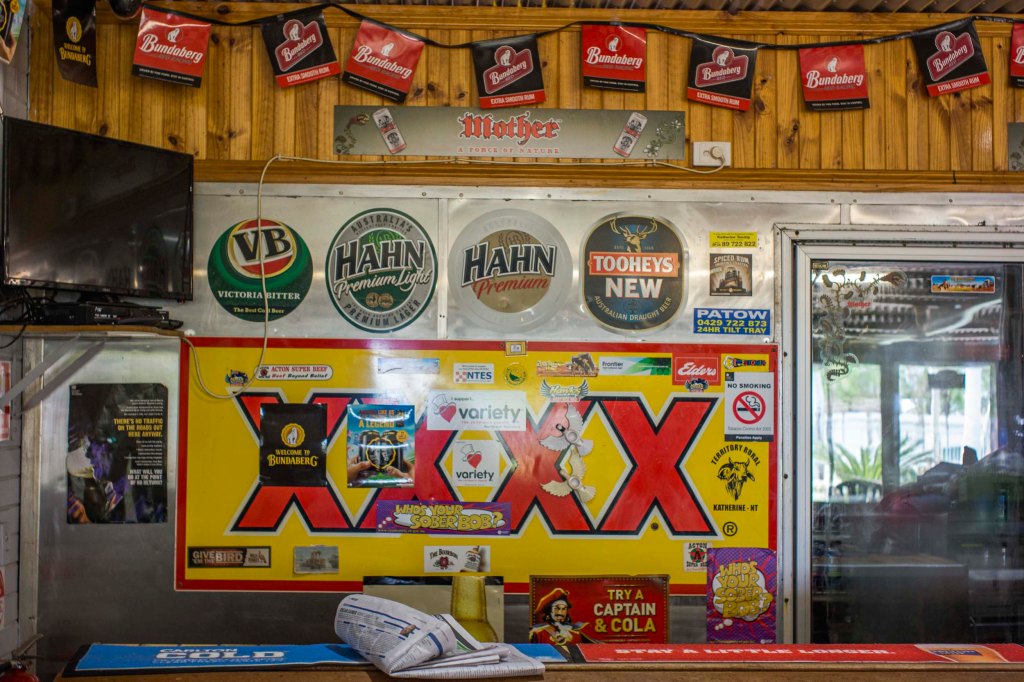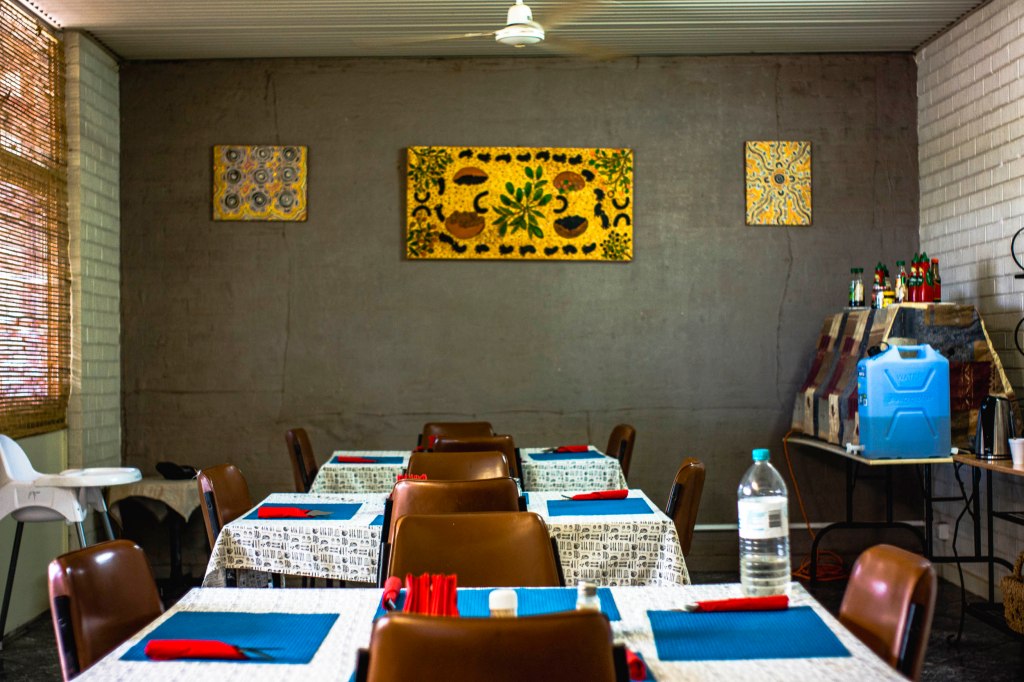We left Lajamanu via Top Springs so that we could link up to the Stuart Highway via the Buntine and Buchanan Highways. The Landrover’s compressor housing had been damaged, and so we had to avoid the long drive over the severe corrugations on the Tamani Road. Whilst having lunch at Top Springs I realised that the photography being done on this road trip was working within contemporary art, in that it is part of the current of art that emerges from post colonialism in a globalised world.

This contemporary art current is a new temporality: it is decentred and diverse, is post medium, is more open to an interaction with artists from different cultures, has no brief against the art of the past, no sense that the past is something from which liberation must be won, has taken leave of the linear conception of history with its carrying art into the future whilst waging war against the old old forms. The conception of time is one of a set of possibilities rather than a linear progression.
What was clear to me was the different temporalities of indigenous art at Lajamanu and western photography in the Australian art world and that this work is being done in the shadow the colonial divide, which shows few signs of disappearing. Consequently, contemporary art photography needs to be concerned with its mode of historicity, its particular situational moment and being part of a dialogue between two distinct views of the natural world: a Western observation of the landscape and an Indigenous sense of being within the landscape.
Indigenous art has becoming part of the mainstream of Australian contemporary art, it has been embraced as a signifier of national identity, and it has formed a major part of Australia’s visual culture since the 1990s. In the wake of postmodern and postcolonial debates, then, for the generation of emerging artists, it is perhaps no longer a question of the influence indigenous art on no indigenous contemporary art, but a question of how an artist positions themselves in relation to this influence.

A key question becomes: how can a contemporary artist, (or critic or curator) whatever their background, respond to the legacy of colonialism? The best that I can come up is that colonial divide must be the starting point of negotiation and dialogue—it must be where the conversation begins not ends.That starting point involves a re-conception of Australian landscape, recognising dispossession through an acknowledgement that all Australian land is inhabited by histories of prior occupation.

Leave a comment